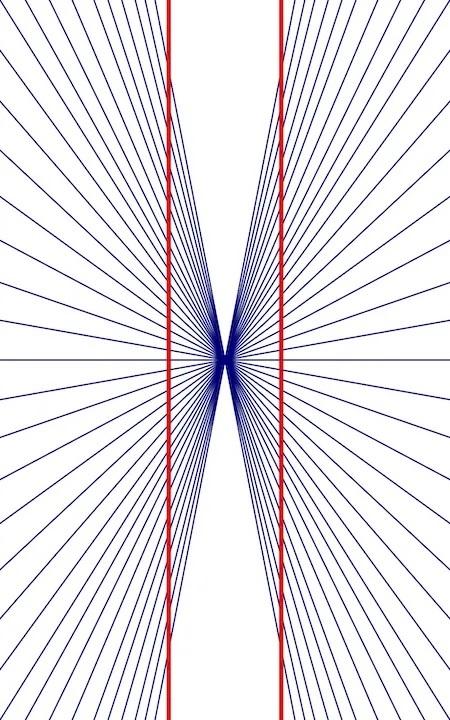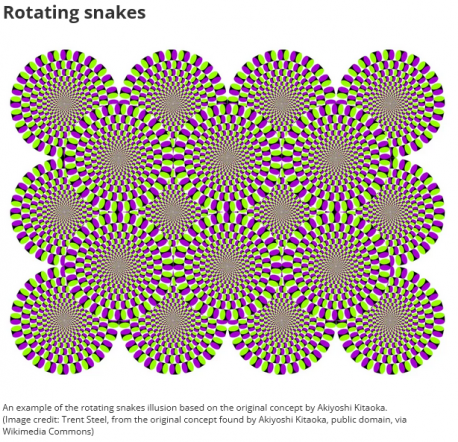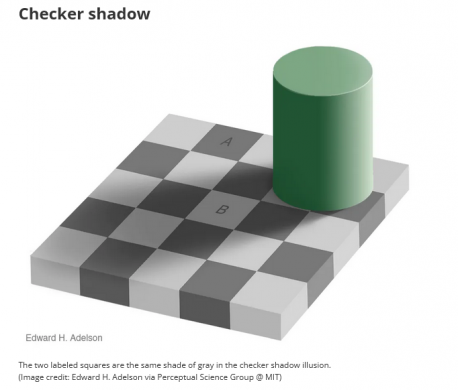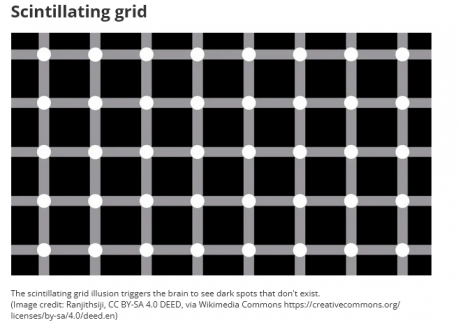Results: We hadn't had an optical illusion survey for a while so I hope you have recovered from my previous one enough to "enjoy" this 2nd one. If any TW member imbibes a mood enhancer before doing this survey, please comment about your trip.
Published on 08/20/2024
Some illusions make you see things that aren't there. Some make you see what is there in a different way. Some illusions are powerful and some are benign. Some of these illusions are literally "In the eye of the beholder." As always, your comments are welcome.

QUESTIONS
GO to COMMENTS
Comments
1.
1.
This first one is called a "Hering illusion" and uses a principle that was known to the ancient Greeks. The Greek columns on the Parthenon in Athens are definitely not "straight" as they both lean inward slightly…and each have a slight bulge, called the "entasis" to correct optical illusions that would occur if the columns were perfectly straight. This example is a less subtle version of this effect. Do you see how straight can sometimes be bent?

Yes
58%
1286 votes
No
11%
248 votes
Undecided
15%
327 votes
Not Applicable
15%
339 votes
- Yes - on our honeymoon
- No
- No
2.
2.
This next one is called "Rotating Snakes." I like snakes but I don't like this illusion so much. This is a motion illusion in which we perceive movement that isn't happening. Everything in the image is static yet the overlapping round objects appear to swirl. If you stare at any specific point in the image, the effect stops. I noticed that even after you stop staring at this one, if you blinked the image was still there. Did this happen to you?

Yes
40%
873 votes
No
29%
642 votes
Undecided
15%
335 votes
Not Applicable
16%
350 votes
3.
3.
Even when you know how this next illusion works, your brain won't let you see it. Both labelled squares in the Checker shadow illusion are the same shade of grey, but the illusion tricks our brains into seeing them as different shades. The square labelled "A" appears much darker because it is surrounded by lighter squares, while the square labelled "B" appears lighter, because it is surrounded by darker squares. The illusion of a shadow also adds to this effect. If you are able to isolate each of the squares, you will see they are alike. Did you get it to work?

Yes
23%
516 votes
No
43%
953 votes
Undecided
15%
321 votes
Not Applicable
19%
410 votes
4.
4.
The last one (for today?) is called the "scintillating grid" and is a modification of the Hermann grid illusion I had in the first survey. This one causes the brain to perceive dark spots inside the white circles present at the intersection of grid lines. These spots can flash in and out of our peripheral vision so rapidly — especially with eye movement — that some might find it difficult to look at the illusion for too long. If you look directly at one of the dark spots, it will disappear. Did you see the dark spots?

Yes
61%
1339 votes
No
14%
316 votes
Undecided
9%
195 votes
Not Applicable
16%
350 votes
COMMENTS


